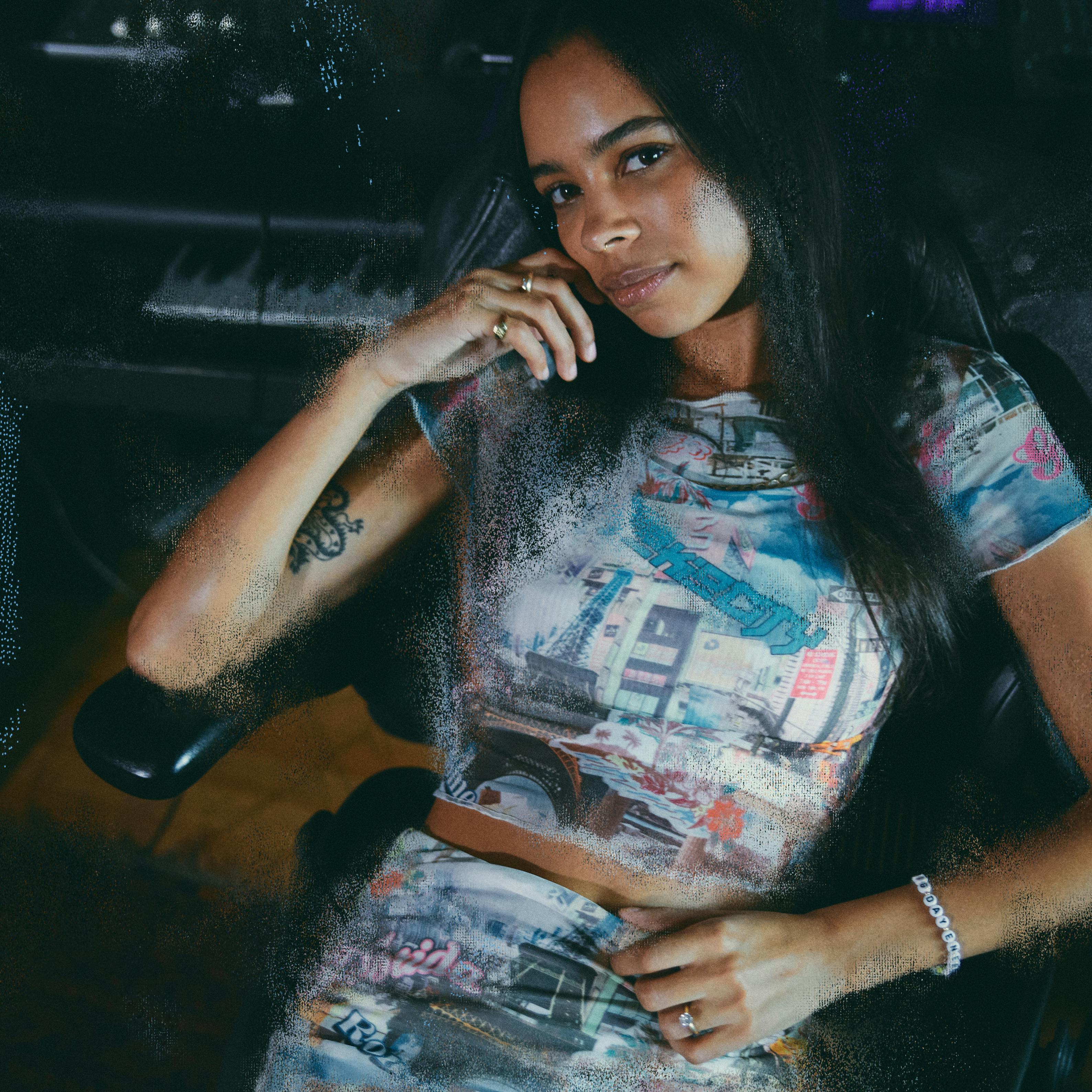It may seem like a difficult task to create a dance track from the piano and vocal samples of an ’80s disco-funk deepcut – the type that might soundtrack a romantic road trip rather than a night out – but London-based DJ and producer TSHA makes it look easy. ‘Power’, which features on her 2023 album, Capricorn Sun, encapsulates her buoyant style of dance music, which she peppers with meticulously selected funk, soul, Bollywood and Malian Wassoulou samples, set against a soundtrack of dreamy synths and piano instrumentals.
Since releasing her debut EP, Dawn, in 2018, TSHA has earnt her spot in London’s creative community: signing with Ninja Tune records, DJing at Burberry’s London Fashion Week after-party in 2022, curating her own fabric presents mix album, and featuring on Printworks’ closing-day lineup. Now, following her first Coachella performance, TSHA is sharing her sounds and sartorial style with a global audience.
It’s fitting, then, that TSHA is the UK ambassador for DICE and Bershka’s Moved by Music platform, which celebrates music, fashion, emerging artists and parties across Europe and Latin America. Fresh off the launch of her curated Moved by Music playlist, we caught up with TSHA to learn more about her hunt for new sounds, her growing appreciation for fashion, and the evolution of her live performances.
